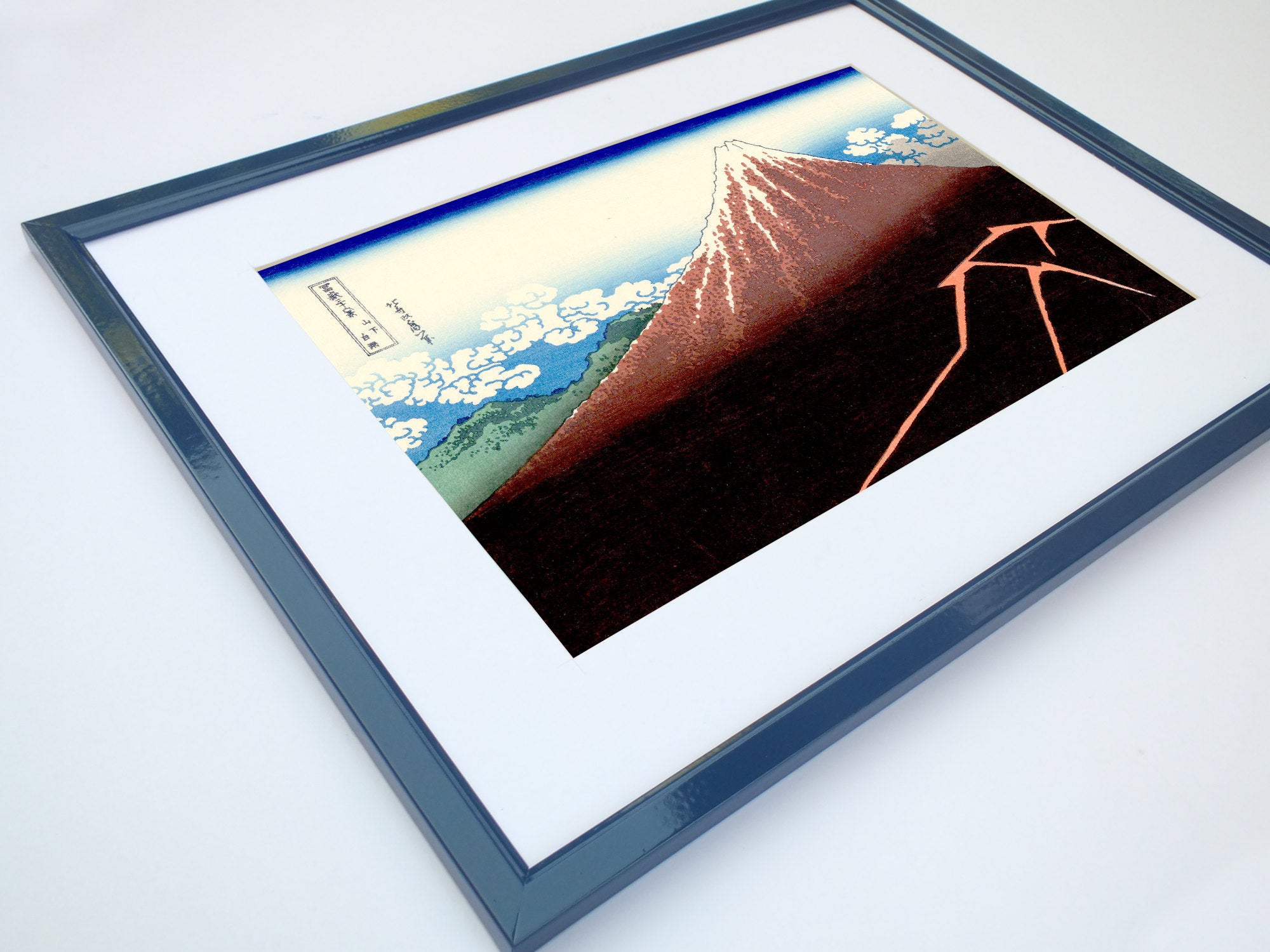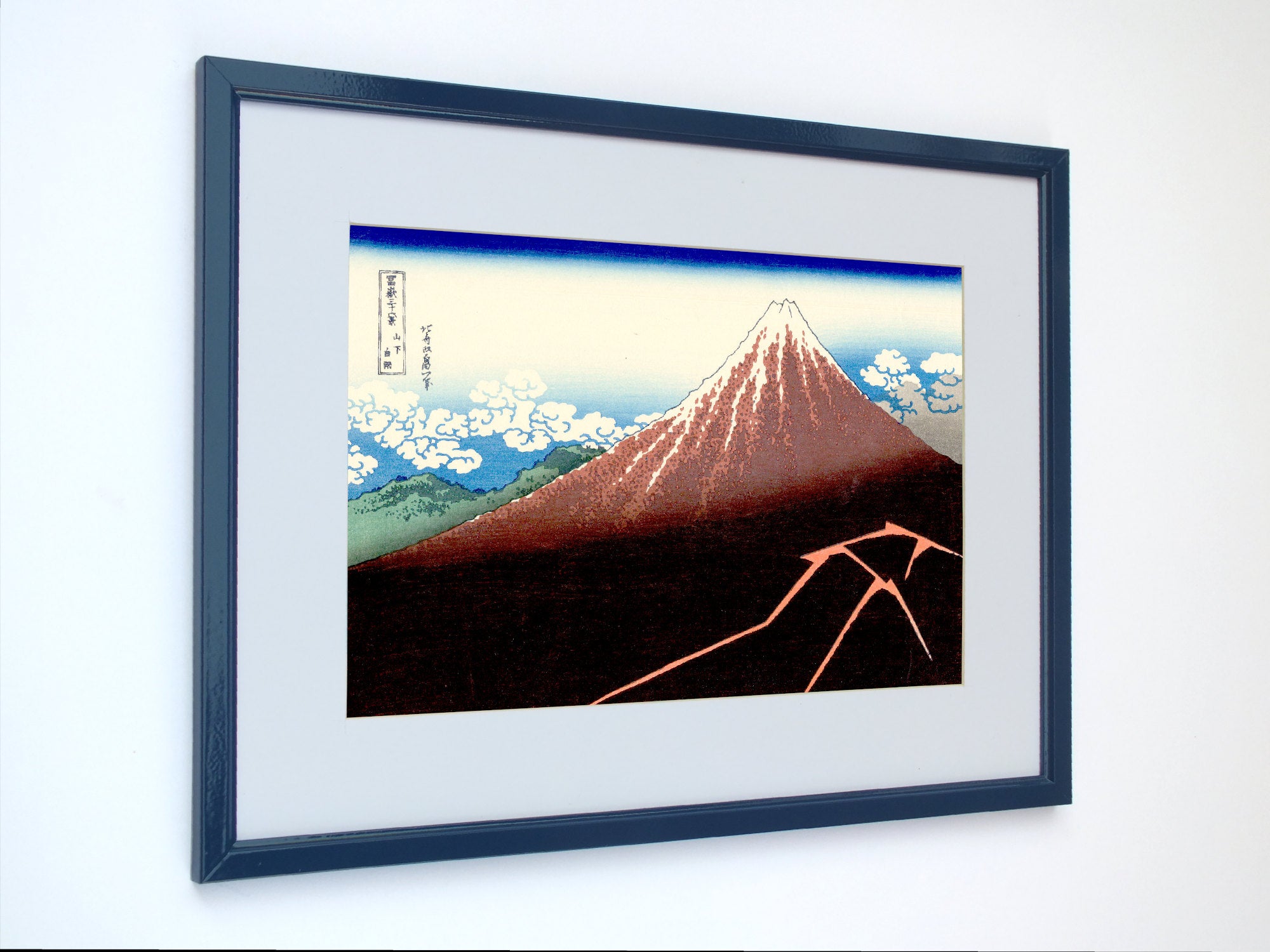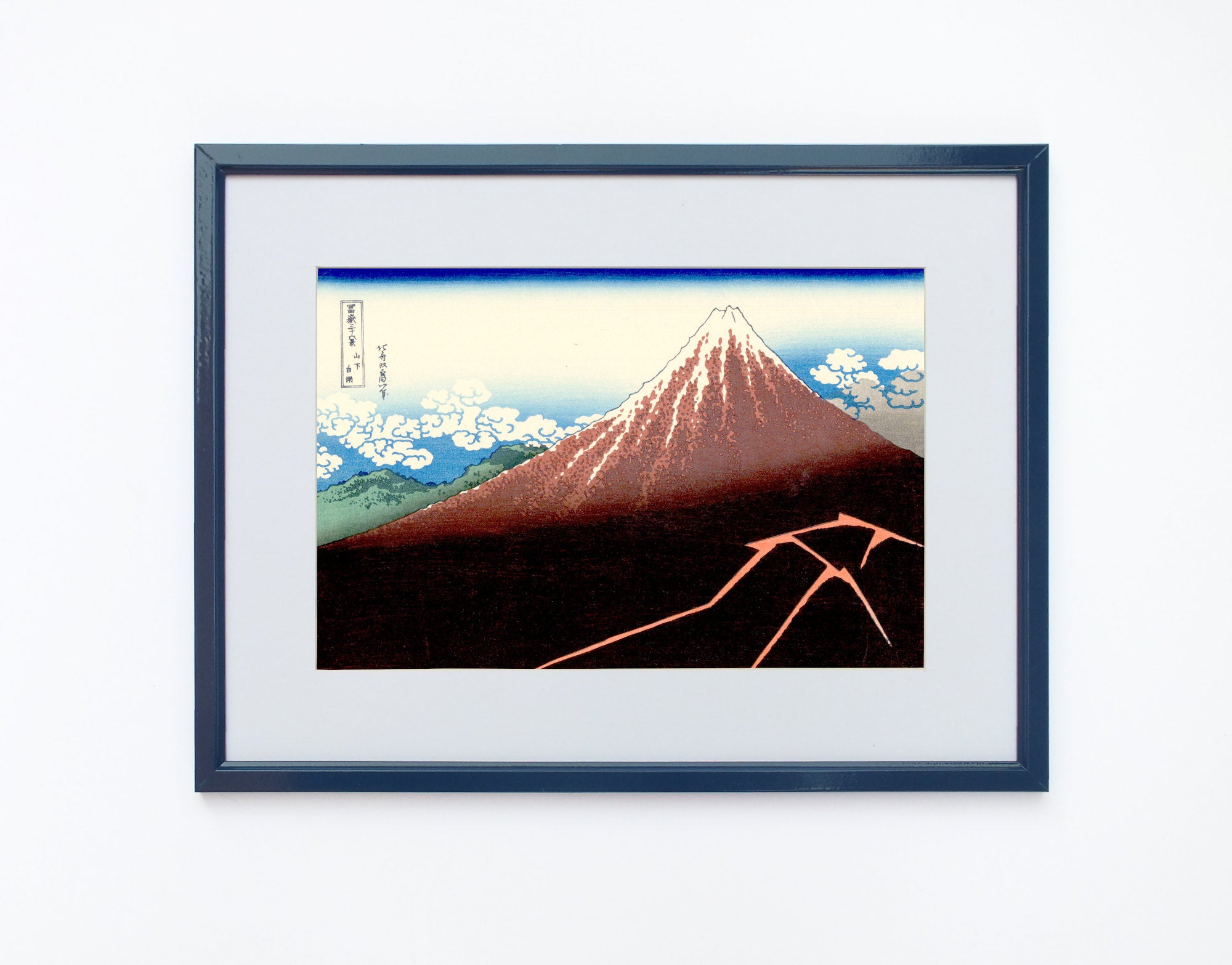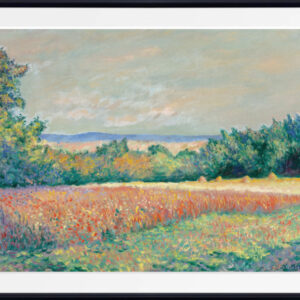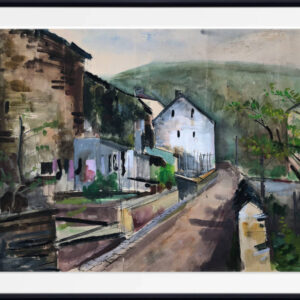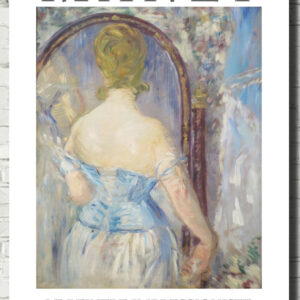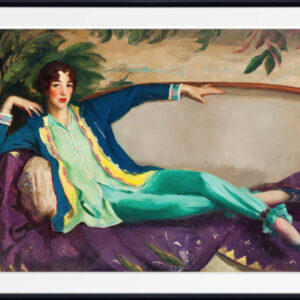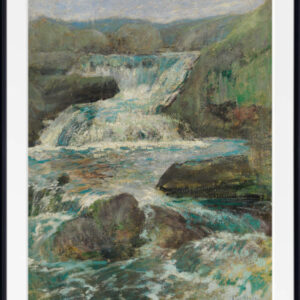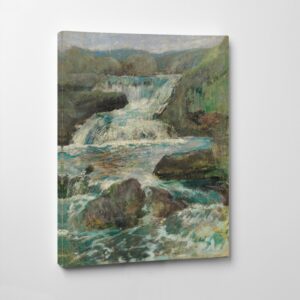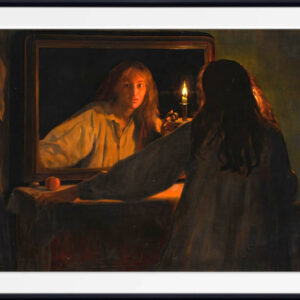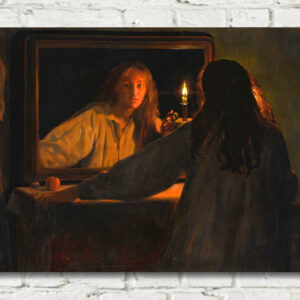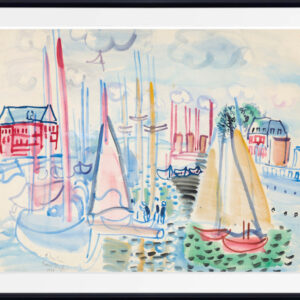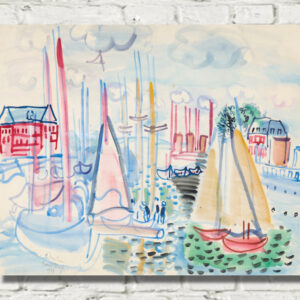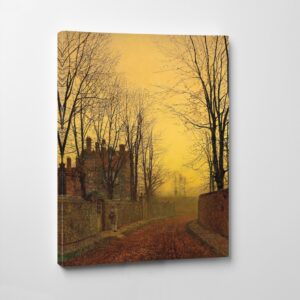36 Views of Mount Fuji, Lightning Below the Summit, Japanese Print
The composition is very similar to that of Fine Wind, Clear Morning (or Red Fuji) from the same series, but the atmosphere is markedly different. Here, instead of a hazy and serene view, Mount Fuji is rendered ominously in strong heavy tones. The contours of the mountainside are more textured and defined. The snowy cap rises sharply over a darkly menacing base which has been split by a bolt of lighting rendered with powerful, almost abstract, zigzag lines. As with Fine Wind, Clear Morning, a thin line of Prussian blue is used in the upper portion of the sky, but here the clouds have a smoke-like quality and appear to cling to the mountain. The three peaks at the summit suggest that this view is of the back of Fuji (i.e. seen from the West), another contrast with the Red Fuji print.
Katsushika Hokusai was a Japanese artist, ukiyo-e painter and printmaker of the Edo period. Born in Edo (now Tokyo), Hokusai is best known as author of the woodblock print series Thirty-six Views of Mount Fuji (富嶽三十六景 Fugaku Sanjūroku-kei, c. 1831) which includes the internationally iconic print, The Great Wave off Kanagawa.
Hokusai created the “Thirty-Six Views” both as a response to a domestic travel boom and as part of a personal obsession with Mount Fuji. It was this series, specifically The Great Wave print and Fine Wind, Clear Morning, that secured Hokusai’s fame both in Japan and overseas. As historian Richard Lane concludes, “Indeed, if there is one work that made Hokusai’s name, both in Japan and abroad, it must be this monumental print-series”. While Hokusai’s work prior to this series is certainly important, it was not until this series that he gained broad recognition.
All prints are made using archival art stocks and UV pigment inks to give up to 200 years life. Choose from unframed, framed and mounted and canvas panel options.

